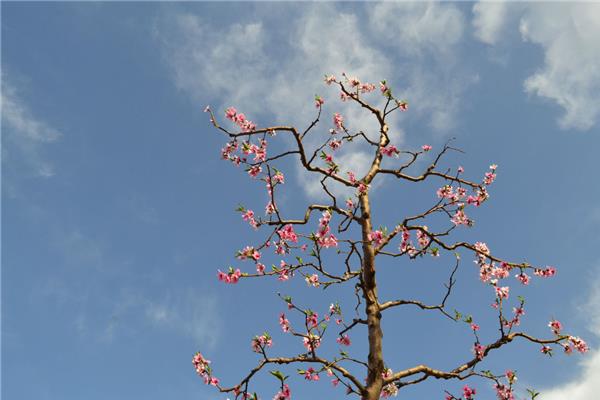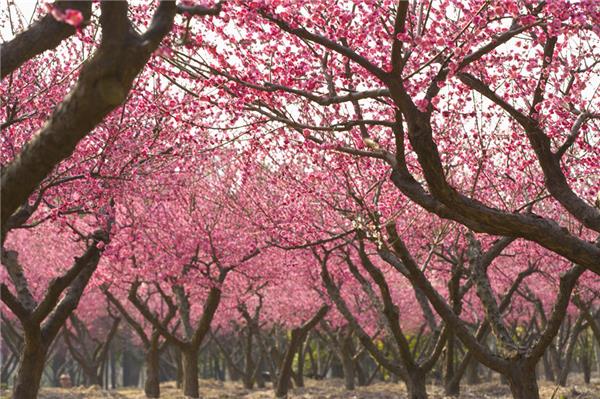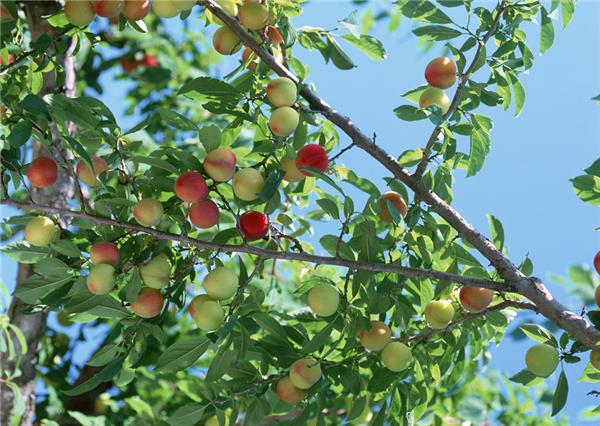Grafting of Peach trees and Management measures of Peach trees after grafting
Peach trees can be planted by sowing, cutting, striping and grafting, but most peach trees in orchards are planted by grafting, because the grafted peach trees are easier to produce.

Grafting Propagation of Peach trees
1. Branch grafting: when the buds have begun to sprout in March. Commonly used cutting, rootstocks with 2012 seedlings are better.
two。 Bud grafting: carried out from July to August, mostly in the shape of "Ding". It is better for rootstocks to have full annual seedlings. The flowering period of sowing and breeding peach is from March to April and the fruit ripening period is from June to August. Harvest ripe fruit, pile up and mash, remove pulp, dry and collect pure seedling seeds can be sown in autumn. Soak the seeds for 5-7 days before sowing. The autumn seeder sprouted early in the following year, the emergence rate was high, and the growth was rapid and strong. When sowing in the next spring, seedling seeds need to be stored in wet sand for more than 120 days. The strip sowing is adopted, the banner is 10 cm, the depth is 1-2 m, and the soil is covered with 6 m after sowing. 25-30 kg per 667 square meters of sowing children. Seedlings 3 cm high, fixed seedlings, plant spacing 20-25 cm.

Maintenance and management of peach trees after grafting
Fertilizer and water management: peach trees should be fertilized and foliar sprayed in time after fruit picking. Topdressing is mainly nitrogen fertilizer. Extra-root topdressing can be sprayed with 0.3% potassium dihydrogen phosphate every 15 days or so for a total of 2-3 times. At the same time, deep turning was carried out after fruit picking, and combined with the application of base fertilizer, the base fertilizer was mainly organic fertilizer, and the application rate was 2-3 times of the yield. Peach trees are more tolerant to drought, and there are more Rain Water in the middle and later stages of growth. if they are not particularly dry, they can not be watered so as not to cause overgrowth and affect flower bud differentiation. But be sure to pour frozen water before freezing. Peach trees are not resistant to waterlogging, and short-term stagnant water in peach orchards will cause yellow leaves, fallen leaves, and even rotten roots and dead trees. therefore, attention should be paid to eliminating stagnant water in flood season.
Crown cultivation: after the annual grafted seedlings were transplanted, the stem was fixed at 40-60 cm. In the shaping band above the fixed stem height, three main branches are generally selected, and the position distribution of the main branches should be uniform, keeping about 45cm with the central stem. It grows radially. The rest of the branches were removed. When cutting in the next winter, the main branch was cut short at 30-50 m in preparation for promoting lateral branches. Other branches, sprouting branches on the trunk and buds on the rootstock should also be removed. In this way, a natural happy crown is formed.
Autumn pruning: after fruit picking, most peach varieties are in the high temperature and rainy season, with large shoot growth and strong ability to form secondary shoots, which can easily cause inner chamber closure and affect flower bud differentiation, so autumn cutting should be carried out. For the strong branches or branches in the upper part of the crown, they can be sprained and pressed from the base after thinning the strong shoots; for competitive branches, twist methods can be used to control their growth and transform them into fruiting branches; overlapping branches, cross branches and old and weak branches should be retracted in time; over-dense branches, thin and weak branches and useless upright branches should be thinned; for erect branches with space retention, they can be pressed down in the crown to ease their growth.

Pest control: aphids can use 3000 times of imidacloprid or 1500 times of acetamiprid. Red spiders can use 1.8% avermectin 3500 times or 15% dicarboxylic acid 1500 times. Pear heart borer can use 4.5% cypermethrin 2000 times solution, or carbaryl salt 4000 times solution. Scab disease can be treated with 50% carbendazim 1500 times or 12.5% uniconazole 3000 times. Bacterial perforation can be treated with 30% Ludebao glue suspension 500 times, or 65% Dysen zinc wettable powder 500 times.
Deep turning root disk: can be combined with topdressing, deep turning root plate, in order to break the soil consolidation, increase soil permeability, help to promote root growth. And burn the pupae deeply turned out or let the birds feed, so as to reduce the occurrence of insect pests in the coming year.
Clear the garden: the peach trees should be cleared in time after picking, and the rotten fruits, diseases and insect pests, fallen leaves and weeds in the peach orchard should be cleaned and buried deeply, so as to eliminate the spread of diseases and insect pests.

Peach trees are generally planted on the ground, but now there are some artificially treated dwarf varieties that can be cultivated in pots, and peach trees that are nursed and nursed can also bear fruitful fruits.
Related
- Wuhan Hospital Iron Tree Blooming Result Was Instantly Frightened by the Gardener Master
- Which variety of camellia is the most fragrant and best? Which one do you like best?
- What is the small blue coat, the breeding methods and matters needing attention of the succulent plant
- Dormancy time and maintenance management of succulent plants during dormancy
- Minas succulent how to raise, Minas succulent plant pictures
- What are the varieties of winter succulent plants
- How to raise succulent plants in twelve rolls? let's take a look at some experience of breeding twelve rolls.
- Attention should be paid to water control for succulent plants during dormant period (winter and summer)
- Watering experience of twelve rolls of succulent plants
- Techniques for fertilizing succulent plants. An article will let you know how to fertilize succulent plants.



